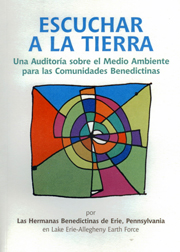|
|
|
|
 |
|
The Seven-Year Plan: Media and Advocacy
 |
 |
 |
Link here to download the latest guidelines document. (Note this is a 2MB file). |
Link
here to download the latest guidelines document to the full Seven Year Plan. (Note this is a file of 2MB).
a.) Subject Matter:
*** To what extent are your media outlets engaging in these issues?
*** Do your newsletters, radios, newspapers, TV stations, websites etc have special sections on ecology?
*** Are they using their editorial authority to promote simpler living, and looking after the natural environment with more care?
*** Could your website have a special section, blog, picture galleries etc on the development of your Seven Year Plan?
b.) Influence:
*** How do you influence your government on its environmental priorities?
*** What extra influence could you wield?
*** Do you have any level of media access to national broadcasting networks where you could raise these issues in, for example, a weekly religious affairs programme?
c.) Guides:
 |
 |
 |
*** Could you draw together, from your audits and educational materials, guides or handbooks for the faithful on how to live more simply and environmentally - with practical suggestions drawn from your experience? This shows the cover of the Benedictine Handbook, Listening to the Earth. |
*** Could you draw together, from your audits and educational materials, guides or handbooks for the faithful on how to live more simply and environmentally - with practical suggestions drawn from your experience?
*** How could these be developed through your publishing houses or through your websites?
b.) Materials:
*** What more could your media – your newspapers, newsletters, radio stations, websites and printers of your holy books, pamphlets and brochures – do to protect the natural environment in terms of the materials they use, e.g environmentally friendly paper and ink?
*** If you have publishing houses have you examined their impact on the environment? Are there occasions when you could you provide web content instead of paper publishing, for example?
SOME IDEAS AND EXAMPLES
* Re: Guides: A Muslim organisation in the UK has issued a special booklet for Muslim households, explaining the impact of climate change using Islamic references and also explaining why Muslims must do their bit for the environment. It was issued in 2008 in time for Ramadan, when Muslims tend to be more reflective. Link here for more details.
* Re: Subject matter: The Bahai communities have used their local radio stations in South America which broadcast in local languages to pass on environmental ideas and information on a weekly basis.
* Re: Guides: A Benedictine Community of nuns in Lake Erie decided to produce a handbook for their communities in Latin America. The Benedictine Handbook Listening to the Earth was published in 2007. As well as around a thousand copies that were delivered by post to the monasteries, between July 2007 and July 2008 4,900 of the Portuguese version, 2,600 of the Spanish and 1,300 of the English were downloaded from ARC's website. Link here for more details.
* Re: Materials: Thomas Nelson in the USA issued the first FSC paper BibleFin 2007. Several other publishing companies are now considering printing only on environmentally friendly paper. The Bible is the most printed and widely distributed book in the world. In 2005 some 125 million New Testaments and 72 million full Bibles were printed and sold. So an environmental strategy in printing and distribution would have a powerful impact.
LINKS
Link here for the main project page to explain the Seven Year Programme.
Link to the
Latest Guidelines for the Seven Year Plan (this is a 2MB document)
Link to the Frequently Asked Questions
page.
The Other Six Key Areas are:
1. Faith-consistent use of Assets: land, investments, purchasing and property
2. Education and Young People
3. Pastoral Care: theological education, training, rediscovering past traditions and wisdom
4. Lifestyles
6. Partnerships and Creating your own Environment Department
7. Celebration
|
 |
|
|
|
|
|

